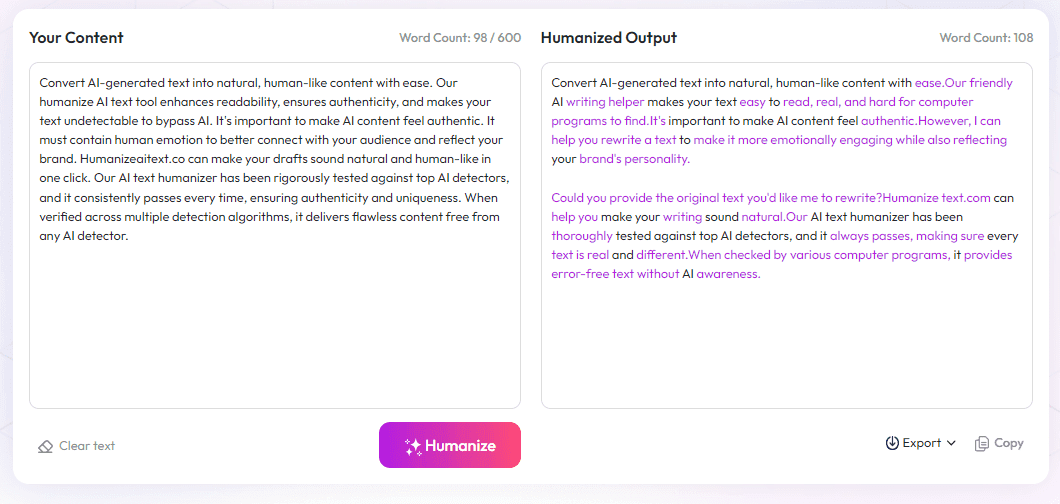Table of Contents
Building trust with your audience can feel tough, especially when they don’t know if they can rely on you. But don't worry—by staying honest, consistent, and real, you can create a bond that lasts. If you're curious about how to do that without sounding fake or salesy, keep reading. I’ll share simple ways to get your audience to see you as someone they can truly count on.
Stick around, and you might just find the secret sauce to making your audience trust you naturally. Whether it’s sharing authentic stories or being open about your process, small changes can make a big difference.
In the next few lines, we’ll go over key ideas like messaging, honesty, and connecting personally—all ways to build that trust the right way.
Key Takeaways
Key Takeaways
- Build trust by being honest, transparent, and consistent in your messages and actions. Share authentic stories and show your human side to connect deeply with your audience.
- Use social proof like reviews and success stories to prove credibility. Regularly communicate through updates, emails, or social media to keep your audience engaged.
- Be open about your process and challenges to foster authenticity. Respond quickly to questions or concerns to strengthen relationships and show you care.
- Prioritize privacy and clearly explain how you handle data. Security and transparency make your audience feel safe and respected.
- Engage face-to-face or through virtual events to create genuine relationships. High trust often comes from personal interactions.
- Share useful, well-researched content consistently to position yourself as a reliable source. Avoid overpromising and keep your messaging real.
- Show authenticity by admitting mistakes and not exaggerating capabilities. Being genuine builds long-term loyalty and respect from your followers.

Building trust with your audience is the cornerstone of a successful brand or platform. When people trust you, they’re more likely to engage, buy, and recommend your services or products. The quickest way to earn that trust? Be honest and transparent in everything you share. According to recent data, 44% of customer experience leaders agree that transparent communication significantly boosts customer confidence, making honesty a must-have in your messaging.
Consistency is key, too. If your actions don’t match your words, trust quickly erodes. Deliver reliable, high-quality content regularly so your audience knows they can depend on you. For example, if you’re a content creator, posting valuable tips weekly can create a sense of reliability that encourages followers to stick around.
Speaking genuinely fosters a strong connection. Show your human side—share your struggles, behind-the-scenes moments, or personal stories. People want to relate to you, not just see polished brand images. This authenticity fuels trust because it shows you're real, not just a faceless entity or corporation.
Using customer reviews and success stories can also serve as social proof. When potential clients see real people benefiting from your offerings, it demonstrates credibility. For instance, highlighting a satisfied customer’s story on your website or social media reassures prospects that they’re making a trustworthy choice.
Being open about your processes and challenges adds another layer of authenticity. If you're upfront about hurdles, your audience perceives you as honest, which can deepen their trust. Brands that communicate openly about mistakes and steps to fix them often build stronger loyalty because they appear transparent and trustworthy.
Regular and meaningful communication helps keep the connection alive. Whether through email newsletters, social media updates, or personal messages, touching base shows that you value your audience’s interest. This ongoing dialogue builds familiarity and trust over time, turning casual followers into loyal supporters.
Establishing authority by sharing reliable information and compelling stories shows you are knowledgeable and dependable. When your audience perceives you as an expert, they are more likely to trust your recommendations and insights. For example, creating well-researched content backed by data not only educates but also positions you as a credible source worth listening to.

8. Use Data and Sentiment Analysis to Build and Maintain Trust
Using data-driven tools like sentiment analysis helps you understand how your audience really feels about your brand.
Regularly evaluating tone, intent, and emotions across interactions allows you to catch issues early and address them effectively.
For example, tracking customer comments and reviews can reveal pain points or areas where your messaging might be falling flat.
This process helps you adapt your communication to meet your audience’s needs, strengthening trust over time.
Implementing sentiment analysis tools, such as (https://monkeylearn.com) or (https://www.brandwatch.com), can make this easier and more accurate.
9. Respond Promptly and Responsively on Social Media and Customer Support Channels
When a customer reaches out with a question or concern, your response time can make or break trust.
Nearly 75% of consumers expect a reply within 24 hours, so aiming for quick responses is key.
Ignoring queries or taking too long to reply signals that you don’t care—which erodes trust fast.
Set up notifications and dedicated support teams to stay on top of engagement, especially on fast-paced social platforms like Twitter and Instagram.
Even simple acknowledgments like “Thanks for reaching out, we’re looking into it” can boost your credibility and deepen relationships.
10. Prioritize Privacy and Data Transparency
Consumers are increasingly aware of how their data is used, and they want clarity and control.
Being transparent about data collection, storage, and usage shows respect and earns trust.
For example, consider clearly explaining your privacy policies and providing easy options to manage data sharing preferences.
Ensuring your website has clear cookie banners and privacy notices aligns with expectations, as 44% of consumers want transparency about data handling.
Implementing strong security measures and communicating them openly reassures your audience that their information is safe.
11. Engage in Face-to-Face Interactions and Events
Nothing beats in-person conversations when it comes to building trust.
Attending industry events, hosting workshops, or even inviting customers to visit your workspace fosters genuine relationships.
Studies show that 95% of attendees trust brands more after participating in face-to-face engagements.
These interactions help humanize your brand, making you more relatable and trustworthy.
If in-person events aren’t feasible, consider virtual meetups or live webinars to keep that personal touch alive.
12. Create Consistent and High-Quality Content that Shows Expertise
Sharing well-researched, useful content plants you as a credible authority in your field.
Content marketing has helped 74% of marketers generate leads and 52% boost customer loyalty.
Focus on delivering value—whether through blog posts, videos, or social media updates—that address your audience’s pain points.
This consistency builds familiarity and trust, encouraging your followers to turn to you when they need recommendations.
Check out (https://automateed.com/keywords-for-kdp/) for ways to create content that resonates and establishes authority.
13. Be Authentic and Avoid Overpromising
People can tell when a brand is being genuine or just putting on a show.
Honest messaging, even if it admits flaws or setbacks, shows integrity and builds loyalty.
Don’t promise what you can’t deliver—this quickly backfires and harms trust.
Share real stories, highlight genuine customer experiences, and keep your promises to foster long-term credibility.
Authenticity also involves acknowledging mistakes and explaining how you plan to improve, which makes customers respect you more.
FAQs
Consistency builds trust and helps your audience recognize your brand. It ensures your messaging and actions align, making your communication clearer and more reliable over time.
Sharing honest content builds trust and shows authenticity. It helps your audience make informed decisions and strengthens your relationship by demonstrating transparency.
Showing your human side makes you relatable and approachable. It helps forge genuine connections, encouraging your audience to trust and engage more with your brand.
Customer reviews and stories offer real-life accounts of your product or service. They demonstrate reliability and can influence new customers by showing positive experiences.



